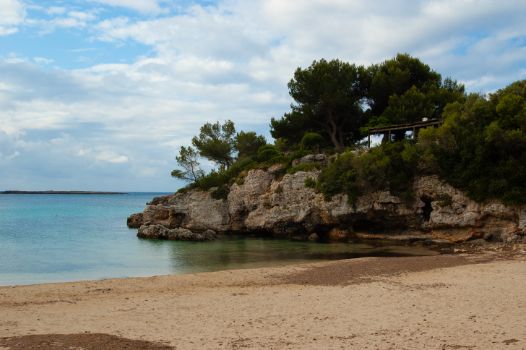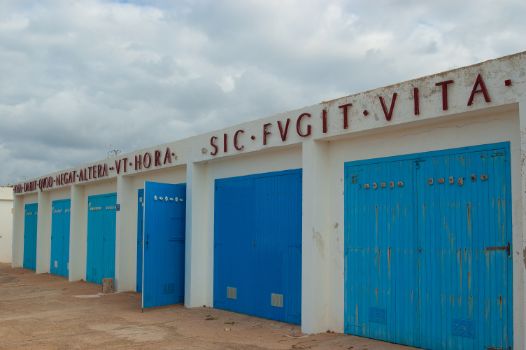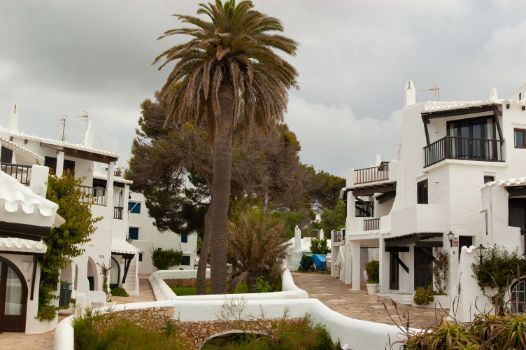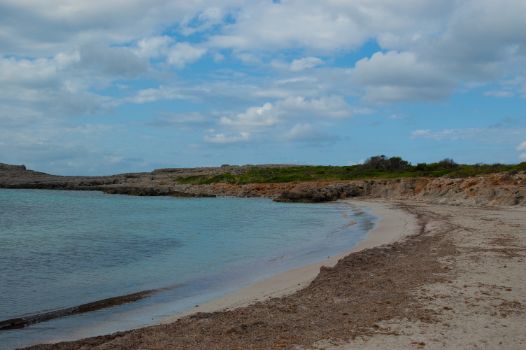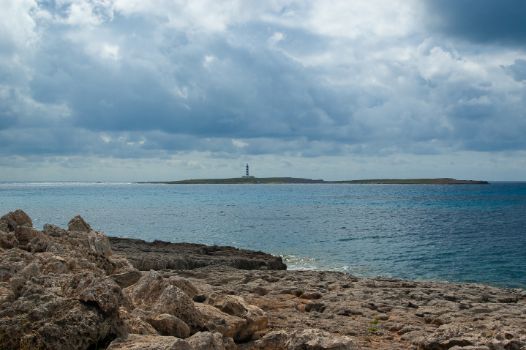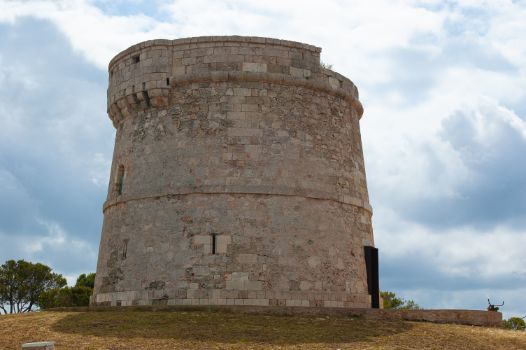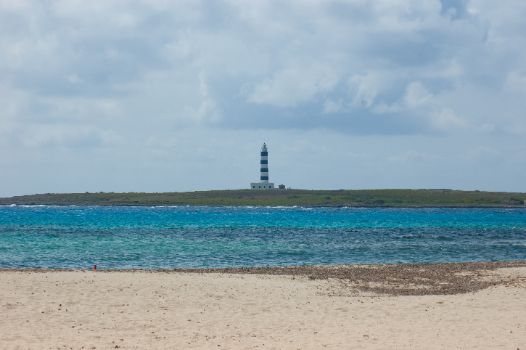
Net of Natural
Trails

Stage 18: Binissafúller - Punta Prima
Description
Colourful stage with a multitude of nuances to enjoy
In a little more than 8 km and in an area that is, a priori, largely urbanised, you will discover a stage full of colours and shapes, with coves such as Binibèquer and Binissafúller, extensive beaches such as Punta Prima, the defensive tower of Son Ganxo, places to get lost in such as the fishing village of Binibèquer Vell and lights that illuminate the path such as the Far de L'illa de l'Aire.

The eighteenth stage of the Camí de Cavalls Nature Trail begins at the southeastern end of a tanca, a typical Menorcan agricultural and livestock farm, where the Nature Trails interpretive panel is located. You leave the estate by crossing a traditional Menorcan gate and turning left at Binisafua. The route then embarks on a shared section for cyclists and walkers of about 523 m, with a pavement running alongside the cycle track. At the end of this shared section, turn right onto the street that leads downhill to Platja Binissafúller. This small cove boasts the clearest, most azure waters, thanks to the good health of the surrounding meadows of Neptune’s grass.
You can also find paradise-like Cala Binissafúller while aviation enthusiasts can enjoy the commercial planes passing overhead as they take off and land at Menorca Airport (MAH).
Leaving the cove, along a gentle ascent of course, after a few metres along a dirt track you return to the asphalted road and a gentle climb along the Passeig de la Mar. The small fishing port of Binissafúller will delight the traveller with its rows of old fishing huts, each adjoined to the other with their whitewashed walls and sky blue doors, linked by the Latin phrases inscribed on the upper part of their façades.

Shortly after, a signpost suggests a right turn which, after a short descent, immerses you into a cinematic landscape that will flood the senses take your imagination to dreamlike places. This place is none other than the fishing village of Binibeca Vell, with its narrow, labyrinthine streets and whitewashed houses, with the dark-coloured wooden elements standing out. Allow yourself to lose track of time and truly enjoy this small, spectacular village as it deserves.
After passing the metal gate to stop motor vehicles from entering Binibeca Vell, turn right along the Passeig Maritim Binibèquer Vell, an urban section of the trail. Don’t forget the rules of the road!
Following the signs you’ll reach two carparks, telling you you're close to Cala de Binibèquer, which is not to be missed. Another cove with azure waters and fine white sand, the area of vegetation before the beach makes this something of an oasis in what is a largely residential area.

The route continues along Carrer de s'Anfos Blau where it leaves Binibèquer Nou, with a red asphalt cycle lane from a small roundabout where you turn right. The journey continues, now without a cycle lane, along Carrer de s'Oronella. Cylists should take great care in this section as the road is shared with traffic. The residential areas of Binibèquer stretch almost as far as Biniancolla, where a Nature Trails information panel displays the route for this final part of the stage.
The route takes you through the streets of the town, mainly along the Passeig de sa Marina, leaving the asphalt with a turn to the right, to travel a little over than 600 metres along the coastline. You’ll later return to the asphalt at the nearby Torre de Son Ganxo, requiring a slight detour from the Camí de Cavalls Nature Trail to visit this three-storey defensive tower built in 1786.
Returning to the route, you can’t miss the Far de L'illa de l'Aire. This lighthouse sits on a small 34-hectare islet located off Punta Prima. At 38 metres high and built between 1857 and 1860, it is the tallest lighthouse in Menorca, and since 1995 has operated using a solar photovoltaic system.
The familiar Nature Trail sign will guide you as you wander through the streets until as far as Punta Prima beach. A place to take a break to enjoy and taste its gastronomy before going along the Passeig de s'Arenal to finally pass a traditional Menorcan gate before the interpretative panel marking the end of this eighteenth stage of the Camí de Cavalls Nature Trail.
Links of interest
Profile
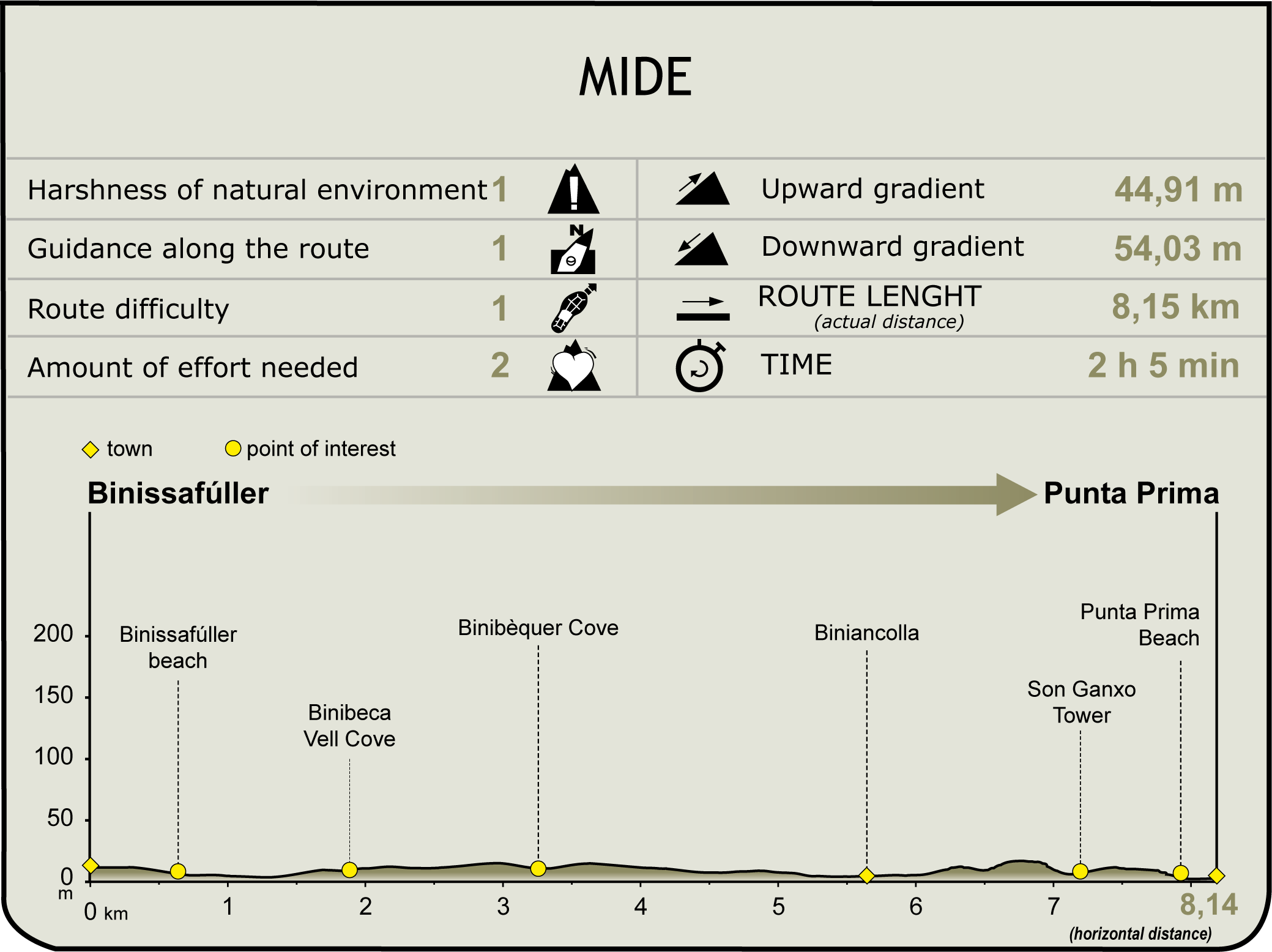
(Calculated according to the MIDE criteria for an average excursionist with a light load)
Highlights
Neptune’s grass meadows
Neptune’s grass (Posidonia oceanica) is the most important aquatic plant in the Mediterranean Sea. Contrary to what many people think, it is not a seaweed but a species of seagrass, a phanerogamous plant that has adapted to the marine environment, with roots, rhizomatous stems, leaves, flowers and fruits. It grows in clean water and is a bioindicator of good water quality. It forms large meadows, forming an ecosystem important to for the many animal species that inhabit it, such as the noble pen shell (Pina nobilis), a large and highly endangered species of Mediterranean clam that finds the perfect home among the Posidonia meadows.
Neptune’s grass is highly seasonal: it loses most of its leaves in autumn, with new foliations beginning at the end of this season, slowing down in winter and accelerating and culminating in spring, when fruiting also takes place. In summer, a large number of organisms living on the leaves of Neptune’s grass, known as epibionts, attach themselves to the leaves, which will be washed along with them by the waves in autumn after the leaves become detached from the stem. This leaf, laden with epibiont organisms, ends its journey on the beaches where it protects against erosion, nourishes organic matter and plays an important role in coastal dynamics.
Neptune’s grass meadows must be protected and conserved for their fundamental role in the conservation of the Mediterranean Sea and for their innumerable functions, such as increasing dissolved oxygen in seawater and the resulting improvement of water quality.




